Samsung cooktop cookware breakdown
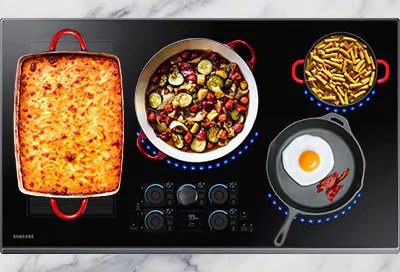
Using the right cookware to meet your needs means you get to be a boss in the kitchen. Never again deal with food taking too long to cook, or getting inconsistent results. Proper pans reduce cooking time, use less energy, and cook food more evenly so you can whip up that perfect dish each and every time.
Basic cookware requirements
No matter what material your cookware is made from, do yourself (and your ingredients) a favor and make sure your pots and pans meet these standards:
A flat bottom
Straight sides
A tight fitting lid (if one is used)
A balanced handle (one that's not so heavy that it tilts the pan)
Proper size is also important. Your cooktop has multiple burners of different sizes, and your cookware's size should match the burner you're using it on. Some elements are dual or triple burners so they can accommodate 2 or 3 sizes.
Note: Induction cooktops also have a special requirement: any and all cookware used must have a magnetic base. This can be tested with any magnet. The magnetic portion of the base should match the size of the element used.
A review of different cookware materials
Choosing the best cookware for your needs will depend on two factors: First, are you using a gas, electric, or induction cooktop, and second, what kind of food are you cooking? We've included your need-to-know information here for each of these different types of cookware materials so you'll have some starting guidance to begin your culinary journey with. A well-stocked kitchen will have a mix of different types of cookware so you can pull out the right tool for the job with each meal.
Note: Never slide a pot across an electric or induction cooktop. Always pick it up and place it. Some cookware materials are more damaging than others, but they can all damage or stain the ceramic cooktop surface if you slide cookware across it.
Aluminum: Is not magnetic. Heats up very quickly. Some types of food (like fruits and juices or foods high in acid) will cause the aluminum to darken. (Anodized aluminum cookware resists staining and pitting.) May leave marks if slid across a ceramic surface.
Recommended for: Vegetables, meats, frying eggs, making sauces (but watch out for sauces with high acid).
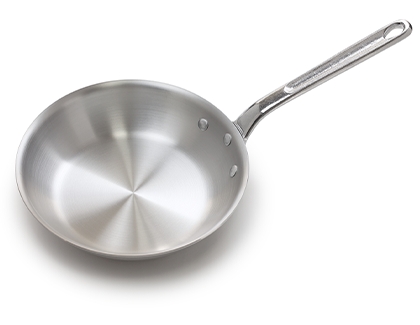
Brass: Is not magnetic. Not recommended.
Recommended for: Decorating your kitchen. Not recommended for use on your Samsung range or cooktop.
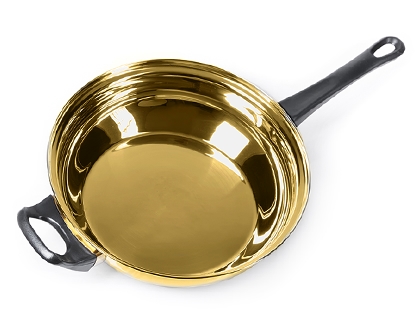
Carbon steel: Is magnetic. It's like a thinner and more lightweight alternative to cast iron, and needs to be seasoned like cast iron does. This is reactive cookware, meaning some food (especially acidic food, like lemons, wine, and tomatoes) cooked in cast iron can taste slightly different from food cooked in different cookware, as well as ruin the pan's seasoning.
Recommended for: High heat cooking, such as sautéing vegetables and searing steaks, scallops, or fish. Can also be really good for stir-fries. Like cast iron, carbon steel is good for a lot of things, but without the heavy weight to lift it.
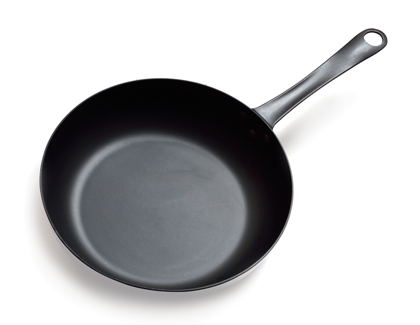
Cast Iron: Is magnetic. However, it can be very damaging to ceramic cooktops if slid across the surface, so use with care. (Sliding on gas cooktops is fine, though.) Heats slowly, but is excellent at retaining heat for cooking at the same temperature for long periods. Cast iron is also reactive and needs seasoning for proper use, like carbon steel. And, cast iron is one of the heaviest forms of cookware.
Recommended for: Meats, eggs, stovetop cakes, pies, casseroles, pancakes, the list just goes on and on. Cast iron is one of the oldest and most dependable forms of cookware. It's fine to use on a ceramic cooktop, and it's compatible with induction, too.
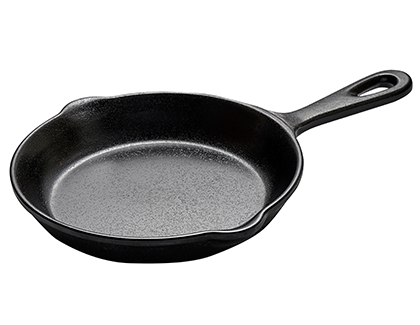
Copper: Is not magnetic. Heats up quickly, but discolors very easily. May leave marks if slid across a ceramic surface. This is also reactive cookware, and may affect the taste of certain foods, especially acidic food (the same food that also discolors it).
Recommended for: Sauces, soup stock, chocolate and other sweets, roux, vegetables, and delicate protein like fish. Avoid acidic foods like fruit, vinegar, and wine.

Enamelware: Magnetism and performance varies based on the base material. Porcelain enamel coating must be smooth to avoid scratching ceramic cooktops.
Recommended for: All those acidic foods that stain some of the other cookware types; they'll be just fine in this one. Also good for frying, sautéing, simmering, searing, and other forms of cooking that benefit from a very consistent temperature. As a bonus, you often don't have to stir as much when using this type of cookware.
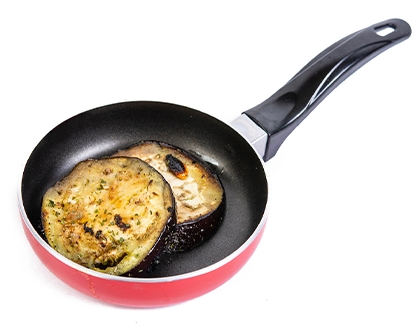
Glass/Ceramic: Is not magnetic. Heats slowly. Not recommended on ceramic cooktop surfaces because it may scratch the glass.
Note: Only use glass cookware that is specified for range top cooking or oven use.
Recommended for: Casseroles, soups, stews, pot roast, and full dinners. Is non-stick without using toxic non-stick chemicals, is lightweight, and won't affect the taste of your food.
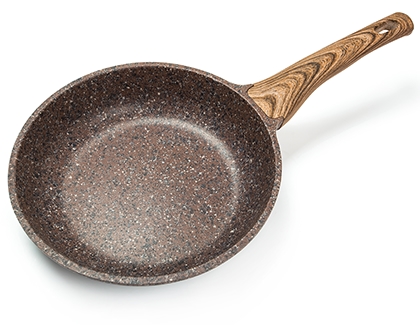
Stainless Steel: Is usually magnetic (manufacturer will typically label if appropriate for induction cooking). Heats slowly and has uneven cooking, however it is durable, easy to clean, and resists staining. Non-reactive.
Recommended for: Eggs! One of the best types to cook eggs in, especially if the pan is well seasoned. Also good for other meats and seafood, vegetables, highly-acidic foods, and sauces.
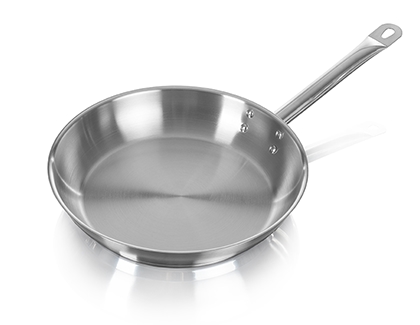
Other answers that might help
-
Mobile 8 AM - 12 AM EST 7 days a week
-
Home Electronics & Appliance 8 AM - 12 AM EST 7 days a week
-
IT/Computing 8 AM - 9 PM EST 7 days a week
-
Text Support 24 hours a day 7 Days a Week
Contact Samsung Support


